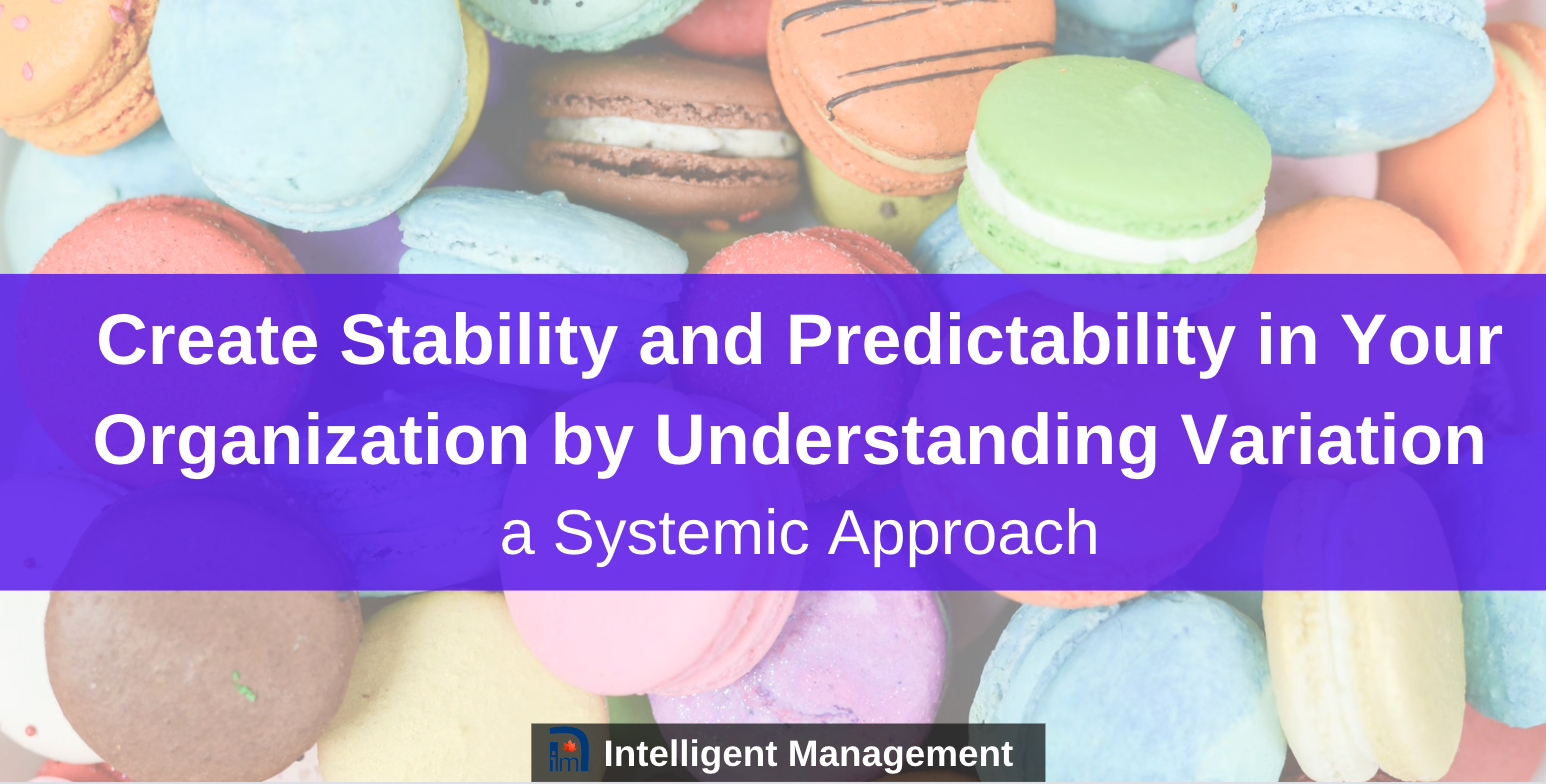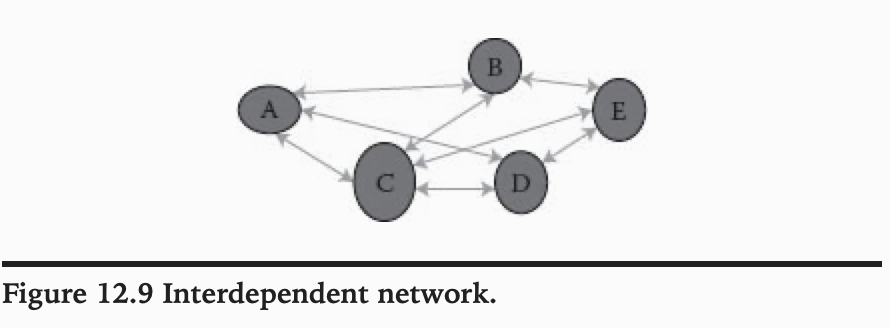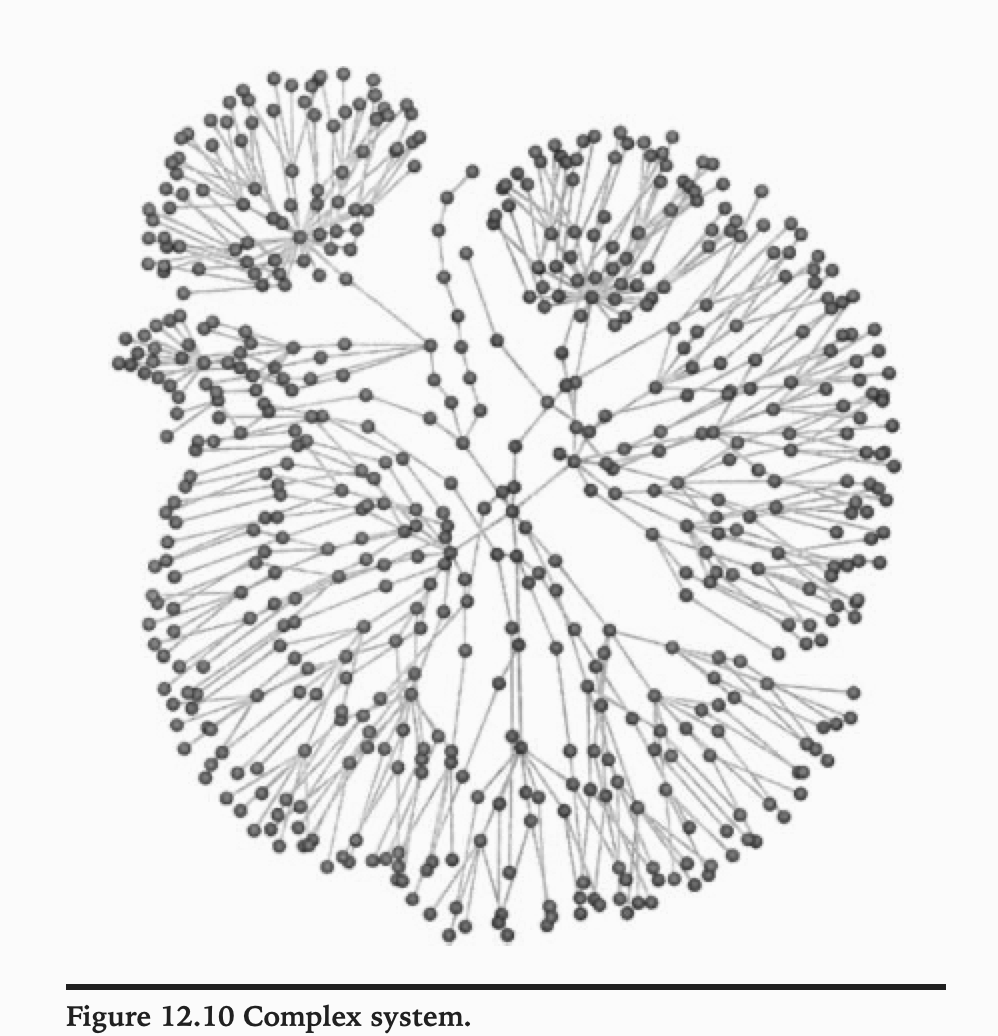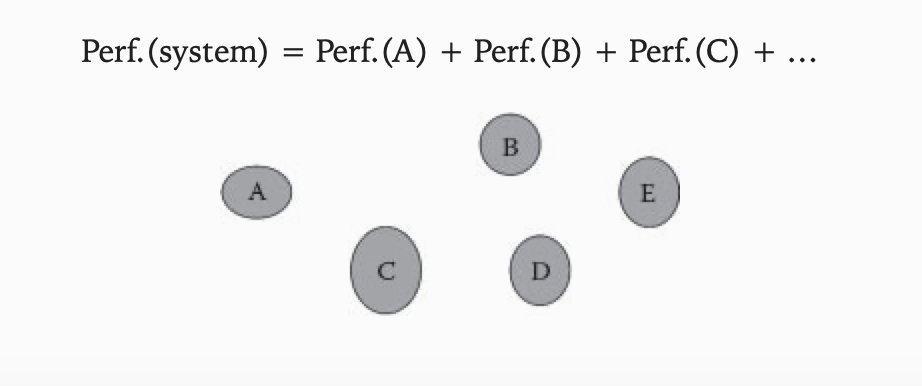
In step Two of the Decalogue, we mapped out our system using Deployment Flowcharts to map the major processes. Now that we are in a situation where we can “see” our organization as a system made up of processes, we have to understand how variation affects our organization.
Step Three of the Decalogue management method is: “Make the system stable (understand variation and its impact on the network)”
Let’s start by understanding more about what variation is and why it is so important to manage it.
Variation and Management Decisions
As we know, a system is a network of interdependent components that work together to achieve a common goal. If there is no goal, there is no system.
If we have a set of segregated parts, neither interacting nor interdependent, let’s call them A, B, and C, the theory of systems shows that the performance of this kind of network is “additive”:
On the other hand, if the components are dependent and/or interacting, the cause–effect relations among the various parts of the system are “nonlinear,” and the theory of systems shows that
Perf.(system) ≠ Perf.(A) + Perf.(B) + Perf.(C) + …
Interdependence and covariance are elements that influence the dynamics of a system (Figure 12.9).

When we have large interconnected systems, it is virtually impossible to predict the effect that changing a single component will have on the system overall. We face a problem of complexity, where nonlinear interactions play an important role.

A company is a “complex system” ruled by nonlinear interactions that make it difficult to make any prediction when any change is effected. That’s why any approach to improve the system has to be “holistic,” and consider all the interactions/interdependencies.
The description of what everybody does, input and output, understanding the interdependencies and, finally, understanding variation associated with each process, is foundational to any form of intelligent management.
What is the guiding rule that should inspire any managerial decision? The job of management is to work on the system and create a predictable environment; as Dr. Deming reminds us, the job of managers is to reduce variation.
Statistical Process Control (SPC), the main offspring of the theory of variation, is the body of knowledge that helps managers to act rationally for the improvement of the system. SPC is not a technique; it is a way of thinking that should be fostered by top management at every level in the organization. We achieve quality and the continuous improvement of the system’s processes by constantly reducing the sources of variation that undermine the predictability of the processes. Predictability can be achieved by incessantly pursuing the uniformity, consistency, and reliability of our processes.
The data and the way we collect them are as important as the analysis we perform on them. The starting point to understand the system and its different processes is to select key points where we monitor variation. Once we have identified these points, we can start with the analysis. Before we look at this further, let’s think about what variation actually means.
Understanding Variation
Any organization, or system, is naturally affected by an increase in entropy, or disorder. For this reason, the day-by-day repetition of simple actions at our workplace can never be the same.
Variation is the term that describes the impossibility of repeating something in exactly the same way. It affects all aspects of our life, and all processes in an organization. It is of profound importance to managers who, in order to exert their role, must ensure a statistically stable and predictable environment. Indeed, as Dr. Deming has stated, the essence of management is prediction. Let’s have a look at a few key points we have to consider when we talk about variation.
The phenomenon of variation is intrinsic to every process and system. We can define a process as a set of actions/activities that happen over time, following a rationale/procedure and aimed at a specified goal. Shopping for food at the market with our family on a Saturday is a process and so is the set of actions that get us to the office every day.
Variation and Processes
Let’s consider the sales process of a company. “Scoring” a sale is just the last step of a process that starts with purchasing the raw material, continues through manufacturing and assembly, up to shipment. In order to be sure that we score the sale, we have to consider the variation associated with every part of the process:
- The arrival time of raw material
- Time to inspect it
- Time for moving material from the raw material warehouse to manufacturing
- Time for manufacturing
- Time for assembly
- Time for moving material to the warehouse of finished products
- Shipment time
There is no way to “predict” the final outcome of the process without considering the different steps that brought us to the finalization of the sale; the only way is to approach the process “holistically.”
Understanding and improving the performance of highly interdependent processes in complex organizations is possible only if we understand the variation associated with single processes, the cause–effect relationships among them, and the impact that they have individually and cumulatively on the final result; in other words, we have to approach the organization (system) as a whole.
Try it for yourself
Think about the major processes that your company carries out. Where are the points where it would make sense to gather data to understand how the process is behaving? In our next post we will look at how to gather data.
See Part 7 of this series ‘Working with Variation to Support Good Decision Making’
PREVIOUS POSTS IN THIS SERIES:
Radically Improving Organizational Performance – A Systemic Approach to Management Part 1
Leadership for Complex Times – A Systemic Approach to Management Part 5
To find out more about ten guided steps to a systemic leap for your company, contact Angela Montgomery at intelligentmanagement@sechel.ws
SCHEDULE AN INTRODUCTORY CALL WITH US
Intelligent Management works with decision makers with the authority and responsibility to make meaningful change. We have helped dozens of organizations to adopt a systemic approach to manage complexity and radically improve performance and growth for 25 years through our Decalogue management methodology. The Network of Projects organization design we developed is supported by our Ess3ntial software for multi-project finite scheduling based on the Critical Chain algorithm.
See our latest books Moving the Chains: An Operational Solution for Embracing Complexity in the Digital Age by our Founder Dr. Domenico Lepore, The Human Constraint – a digital business novel that has sold in 43 countries so far by Dr. Angela Montgomery and ‘Quality, Involvement, Flow: The Systemic Organization’ from CRC Press, New York by Dr. Domenico Lepore, Dr. .Angela Montgomery and Dr. Giovanni Siepe.







Leave a Reply